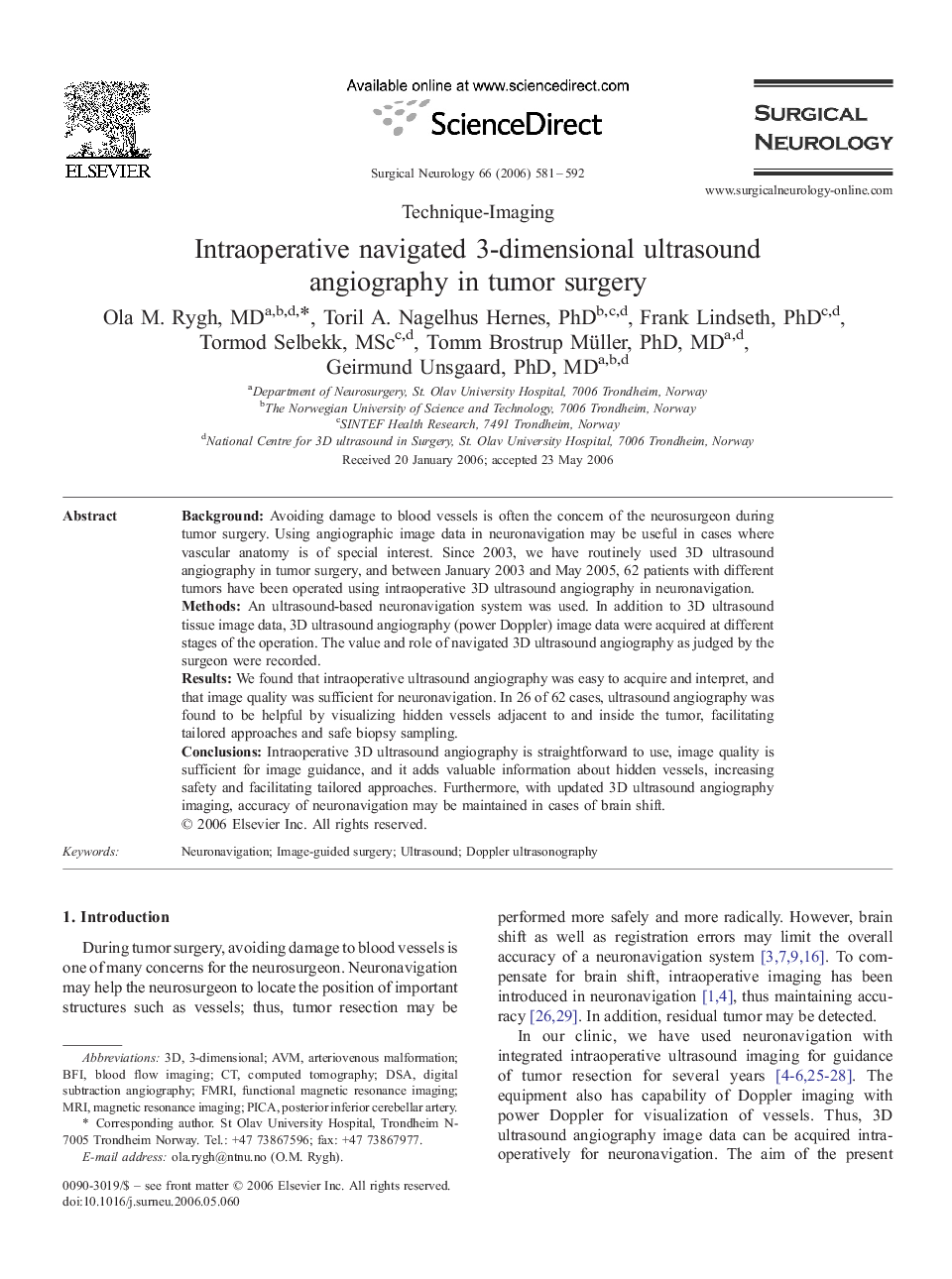| Article ID | Journal | Published Year | Pages | File Type |
|---|---|---|---|---|
| 3093771 | Surgical Neurology | 2006 | 12 Pages |
BackgroundAvoiding damage to blood vessels is often the concern of the neurosurgeon during tumor surgery. Using angiographic image data in neuronavigation may be useful in cases where vascular anatomy is of special interest. Since 2003, we have routinely used 3D ultrasound angiography in tumor surgery, and between January 2003 and May 2005, 62 patients with different tumors have been operated using intraoperative 3D ultrasound angiography in neuronavigation.MethodsAn ultrasound-based neuronavigation system was used. In addition to 3D ultrasound tissue image data, 3D ultrasound angiography (power Doppler) image data were acquired at different stages of the operation. The value and role of navigated 3D ultrasound angiography as judged by the surgeon were recorded.ResultsWe found that intraoperative ultrasound angiography was easy to acquire and interpret, and that image quality was sufficient for neuronavigation. In 26 of 62 cases, ultrasound angiography was found to be helpful by visualizing hidden vessels adjacent to and inside the tumor, facilitating tailored approaches and safe biopsy sampling.ConclusionsIntraoperative 3D ultrasound angiography is straightforward to use, image quality is sufficient for image guidance, and it adds valuable information about hidden vessels, increasing safety and facilitating tailored approaches. Furthermore, with updated 3D ultrasound angiography imaging, accuracy of neuronavigation may be maintained in cases of brain shift.
